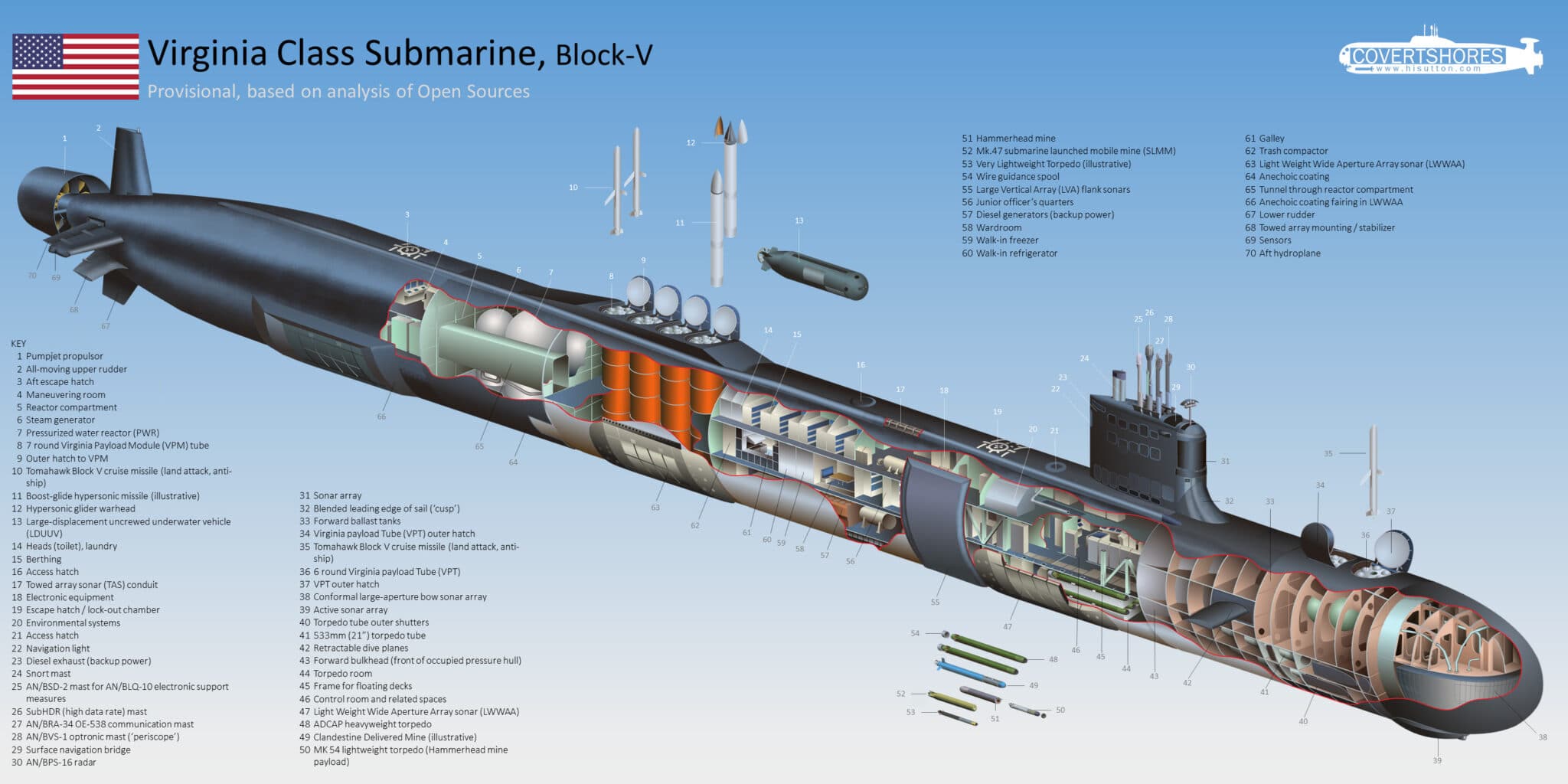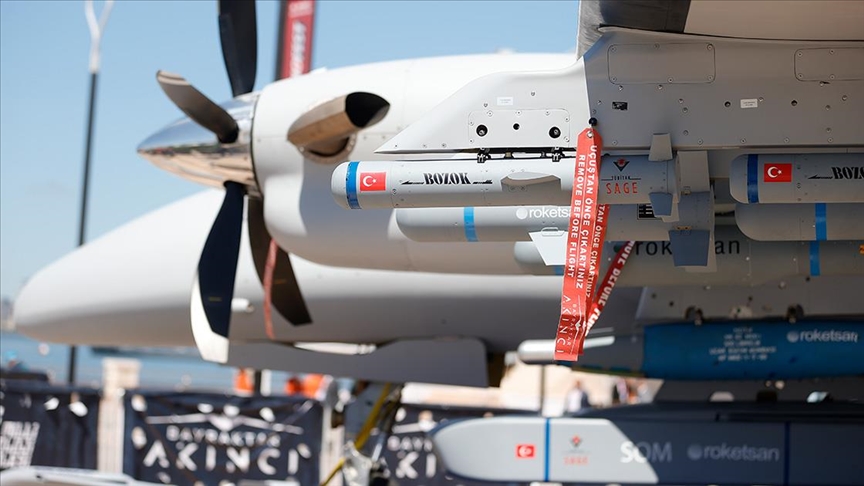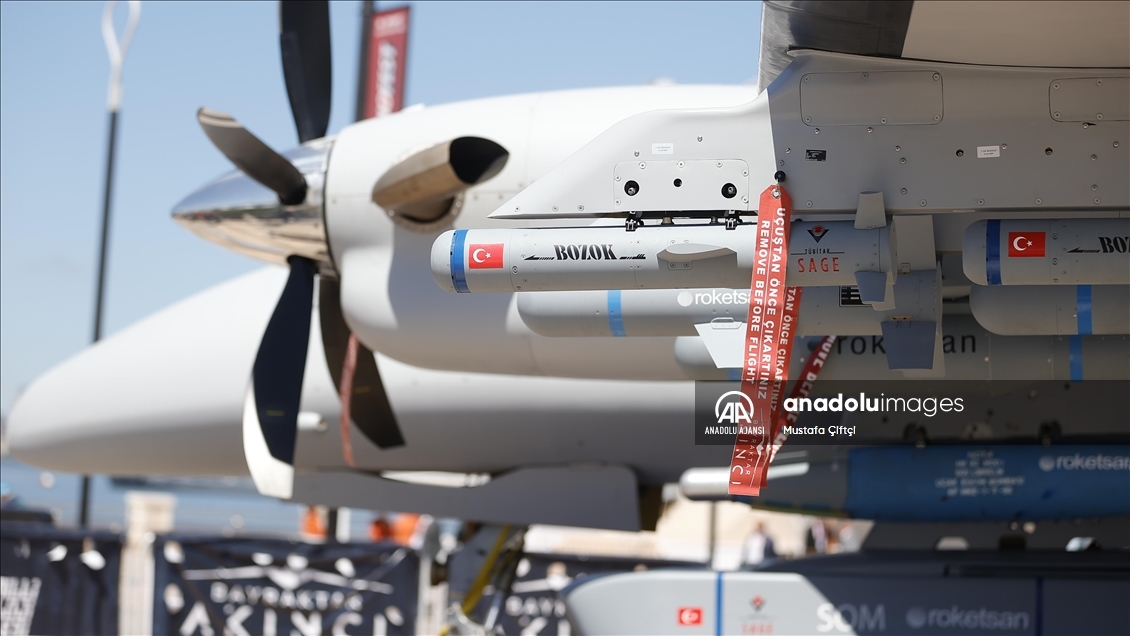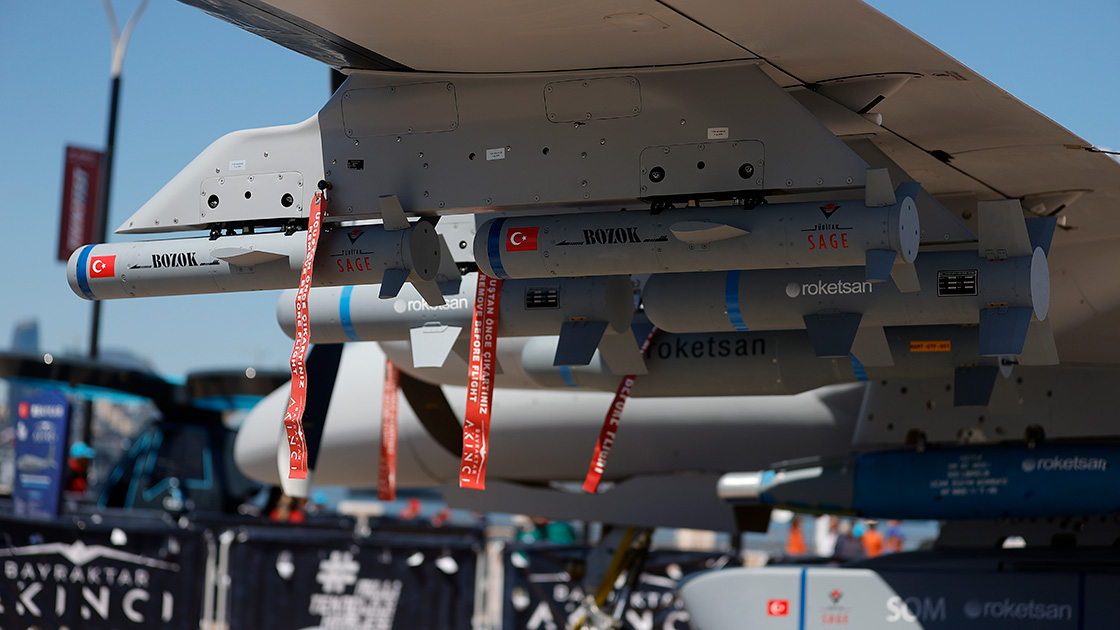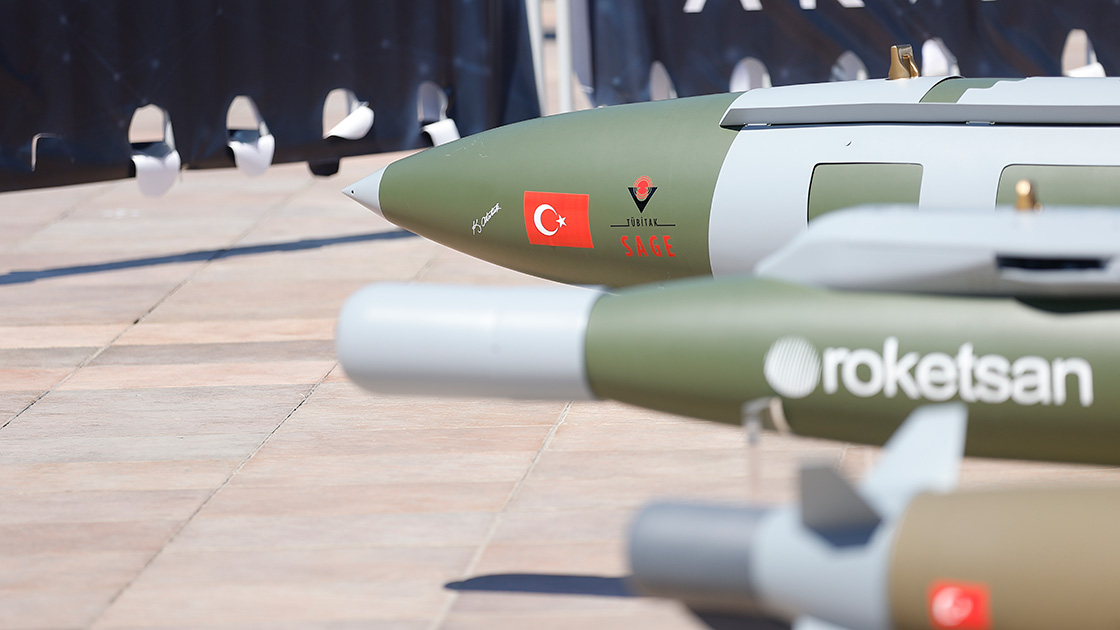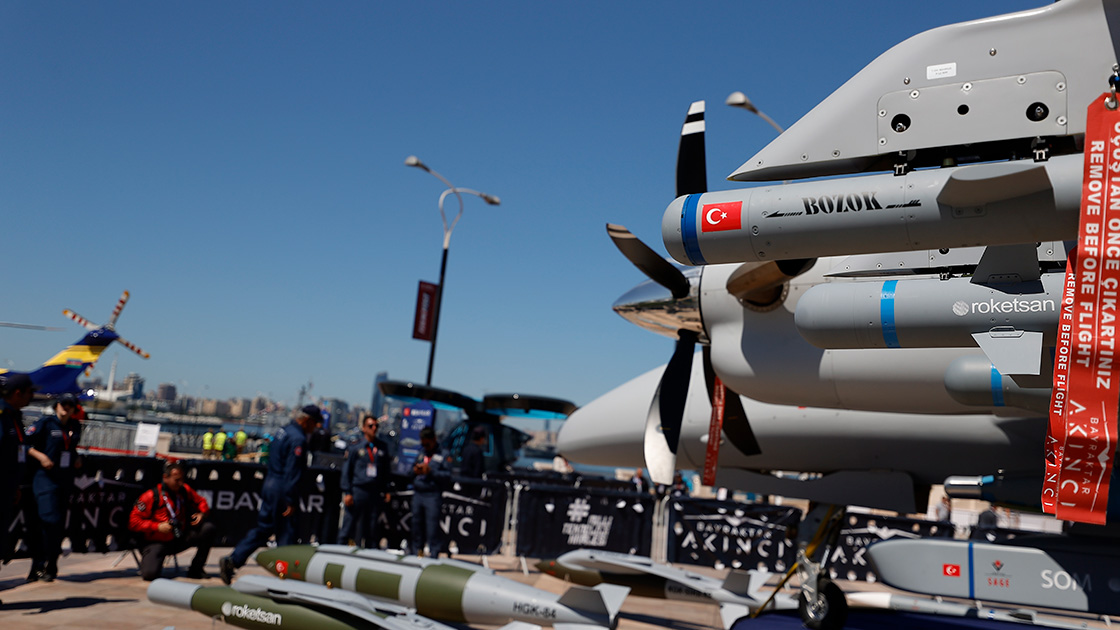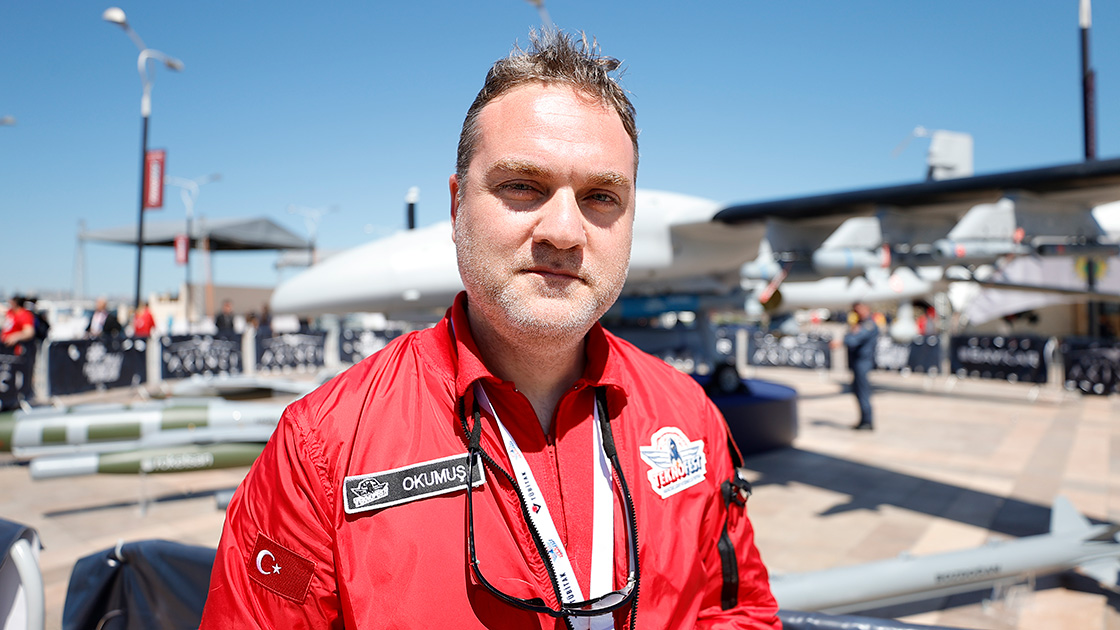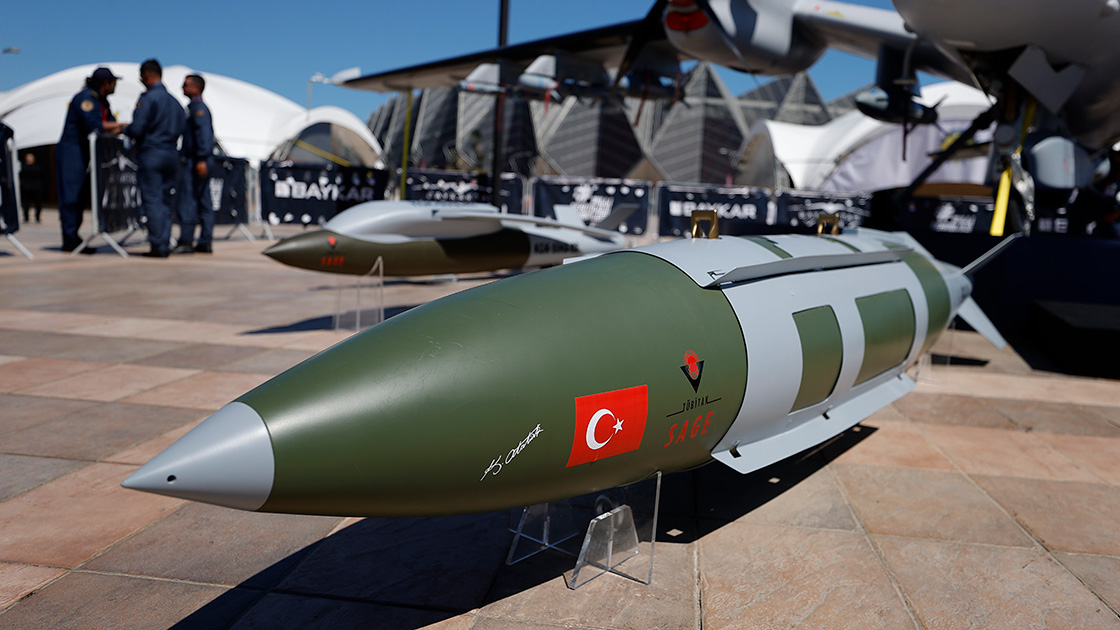National ammunition is landing on the field one by one:
The serial production of the laser-guided miniature ammunition Bozok, developed for unmanned aerial vehicles (UAV) within the Turkish defense industry, has begun.
Goksel Yildirim |04.06.2022
Photograph: Mustafa Ciftci/AA
Ankara
❮❯
Gürcan Okumuş, Director of the Scientific and Technological Research Council of Turkey (TÜBİTAK) Defense Industry Research and Development Institute (SAGE), told Anadolu Agency (AA) that the demand for defense industry products is increasing day by day with the effect of cyclical developments.
Stating that as the Institute, new ones have been added to the existing projects in order to provide R&D, development and capability to the existing products, Okumuş stated that while the mass production of the cruise missile SOM project continues at ROKETSAN, the studies for adding capabilities to different variants of the missile and nationalization of the sub-components are continuing.
Informing that successful shootings were carried out within the scope of the project, Okumuş said, "We have come to an important stage in SOM-J. Our F-16 shots have started. Our shots that provide engagement to the target have also started. SOM-J is a project that we care about as a cruise missile that can also be launched from UAVs. Close At the same time, we will see very important results there, we can say that the project is at the completion stage." said.
Stating that the tests of air-to-air missiles continue and that there will be different test campaigns this year, Okumuş said, "Our preparations for mass production continue. Our Gökhan project has started, our work on our ramjet air-air missile continues intensively." he said.
New capabilities coming to guidance kits
Pointing out that guidance kits are used extensively in operations, Okumuş made the following assessments:
"We saw how quickly ammunition stocks were melted down in the Ukrainian operation. We are also working intensively on guidance kits in this regard. We are focusing on different seekers, especially laser seeker, to gain new capabilities, increase nationality rates. HGK-82, HGK-83. We continue to work on winged guidance kits with lasers and other seeker heads, different capabilities, anti-jamming antennas, and improvements for faster production. Guidance kits will also be used as weapons for our new UAVs with high carrying capacity."
Kuzgun is close to the first order
Stating that UAV-oriented ammunition projects are also progressing rapidly, Okumuş gave the following information about the modular ammunition family Kuzgun project:
"Kuzgun is a project we care about a lot. We are making significant progress in Kuzgun. There are different variants of Kuzgun: free floating, turbojet and solid fuel. All three continue in parallel. First of all, the tests of the free float will be completed and we are very close to the order stage.
We gave great importance to the studies on the solid fuel of the Kuzgun, which we will make its first shot from an unmanned sea vehicle. This year, we will see the Raven being thrown from an unmanned sea vehicle, and in 2023, we will make significant progress in the turbo-jet model. Work continues on Kayı, which we call the younger of Kuzgun."
Bozok's potency and range increase
Gürcan Okumuş stated that mass production has started in Bozok, the first UAV ammunition of the institute and its qualification has been completed.
Stating that they have developed Bozok's penetrating warhead, Okumuş said, "We will have some test shots on it. We are working on extending the range. There were shots at Bozok that exceeded 15 kilometers. We are looking at where we can bring it. We aim for a longer range in Bozok." said.
Okumuş stated that they will make deliveries in batches with mass production.
Navigation and explosive material solutions
Informing that they continue to develop navigation products while the system projects continue, Okumuş said that the navigation packages that can be used in fast boats and ships have made significant progress.
Stating that they have started to deliver nearly 20 deliveries within the scope of an order, Okumuş said, "Our shipyards are working especially with high export potential. We aim to use our navigation products there. The inertial measurement unit we call navigation, the global positioning receiver Kaşif. Mass production has started, but it continues to develop." he said.
Pointing out that they are also experts in explosive and energetic materials, Okumuş continued:
"R&D studies are still continuing on this subject. We developed Turkey's first thermobaric explosive, Tendürek. We developed very different, very cost-effective versions of it, and it became qualified and started to be used. We have products such as Kor and Alaz. Within the scope of the Volkan project. "Powder thermobaric works have been completed, mass production will be made by the Machinery and Chemical Industry. As powder thermobaric, we are progressing in ammunition systems and energetic materials that can be used in different products."
Cooperation with military factories
Stating that a project of 1000 units for the HGK-82 with ASFAT, the Military Factory and Shipyard Operation Joint Stock Company, is about to be completed, Okumuş said, "We are in talks. We will continue to provide support if they have different needs. We continue to support in different projects to use the production capabilities of our military factories. will." used the expressions.
Source:
https://www.aa.com.tr/tr/bilim-teknoloji/milli-muhimmatlar-birer-birer-sahaya-iniyor/2605504





